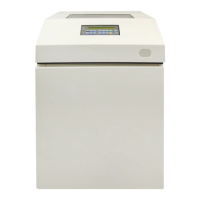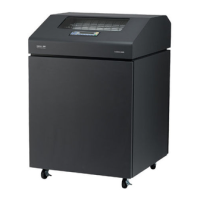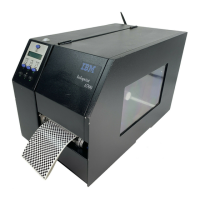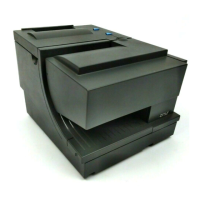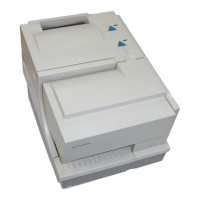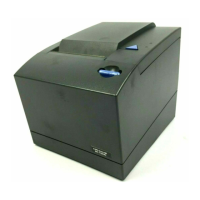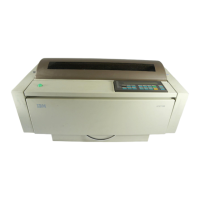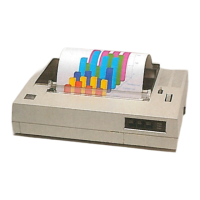Glossary
copy counter. Bytes in an Acknowledge Reply that
identify the number of copies of a page that have
passed a particular point in the logical paper path.
copy group. A set of copy subgroups that specify all
copies of a sheet. In the IPDS architecture, a copy
group is specified by a Load Copy Control command.
In the MO:DCA architecture, a copy group is specified
within a Medium Map. See also copy subgroup.
copy modification. The process of adding, deleting,
or replacing data on selected copies of a presentation
space.
copy subgroup. A part of a copy group that specifies
a number of identical copies of a sheet and all
modifications to those copies. Modifications include
the media source, medium overlays to be presented
on the sheet, text suppressions, the number of pages
on the sheet, and either simplex or duplex
presentation. In the IPDS architecture, copy
subgroups are specified by Load Copy Control
command entries. In the MO:DCA architecture, copy
subgroups are specified by repeating groups in the
Medium Copy Count structured field in a Medium
Map. See also copy group.
correlation. (1) A method used in GOCA to
determine if a picture defines any parts of a drawing
that lie within a pick window. See also pick window.
(2) A method used in the IPDS architecture to match
exceptions with commands.
correlation ID. A two-byte value that specifies an
identifier of an IPDS command. The correlation ID is
optional and is present only if bit one of the
command’s flag byte is B
'1'.
CPGID. See Code Page Global Identifier.
C-space. The distance from the most positive
character coordinate system X-axis value of a
character shape to the character’s escapement point.
C-space can be positive, zero, or negative. See also
A-space and B-space.
current baseline coordinate. The baseline
presentation position at the present time. The
baseline presentation position is the summation of the
increments of all baseline controls since the baseline
was established in the presentation space. The
baseline presentation position is established in a
presentation space either as part of the initialization
procedures for processing an object or by an Absolute
Move Baseline control sequence. Synonymous with
current baseline presentation coordinate.
current baseline presentation coordinate (B
c
). The
baseline presentation position at the present time.
The baseline presentation position is the summation
of the increments of all baseline controls since the
baseline was established in the presentation space.
The baseline presentation position is established in a
presentation space either as part of the initialization
procedures for processing an object or by an Absolute
Move Baseline control sequence. Synonymous with
current baseline coordinate.
current baseline print coordinate (b
c
). In the IPDS
architecture, the baseline coordinate corresponding to
the current print position on a logical page. The
current baseline print coordinate is a coordinate in an
I,B coordinate system. See also I,B coordinate
system.
current drawin g attributes. The set of attributes used
at the present time to direct a drawing process.
Contrast with default drawing attributes.
current drawing controls. The set of drawing controls
used at the present time to direct a drawing process.
Contrast with default drawing controls.
current logical page. The logical page presentation
space that is currently being used to process the data
within a page object or an overlay object.
current position. The position identified by the
current presentation space coordinates. For example,
the coordinate position reached after the execution of
a drawing order. See also current baseline
presentation coordinate and current inline
presentation coordinate. Contrast with given position.
cut-sheet media. Unconnected sheets. Contrast with
continuous-form media.
D
data stream. A continuous stream of data that has a
defined format. An example of a defined format is a
structured field.
data-stream exception. In the IPDS architecture, a
condition that exists when the printer detects an
invalid or unsupported command, order, control, or
parameter value from the host. Data-stream
exceptions are those whose action code is X
'01',
X
'19',orX'1F'. See also asynchronous exception
and synchronous exception.
decoder. In bar codes, the component of a bar code
reading system that receives the signals from the
scanner, performs the algorithm to interpret the
signals into meaningful data, and provides the
interface to other devices. See also reader and
scanner.
default. A value, attribute, or option that is assumed
when none has been specified and one is needed to
continue processing. See also default drawing
attributes and default drawing controls.
default drawing attributes. The set of drawing
attributes adopted at the beginning of a drawing
process and usually at the beginning of each root
202 6400 IPDS
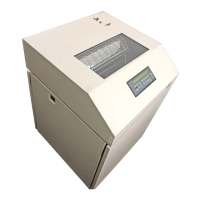
